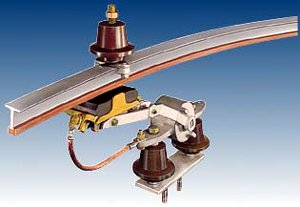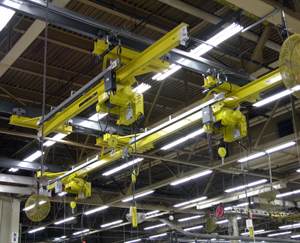Conductor Rail Review
Electronics, Instrumentation & Electrical Database
Conductor Rail Review
Conductor Rails are electrical conductors of varius profiles that are used to provide electrical potential to moving systems along a path of travel. Conductor rails are mobile electrification techniolgy for moving transportation vehicles and equipment. Common applications include: Manfucturing robts, material handling systems, trains, mobile hoistsnad cranes. automated storage and retrieval systems, and buses.
Conductor rail systems are available in a variety of configuration depending on applications requirements Enclosed conductor systems typicall enclose conductors in a protective conduit meeting safety standards set forth an applicable national or international standard, such as National Electrical Code (NEC).
Conductor rails are also refered to as "Third rail" systems are a means of providing electric traction power to trains, and they use an additional rail (called a "conductor rail") for the purpose. On most systems, the conductor rail is placed on the sleeper ends outside the running rails, but in some cases a central conductor rail is used. The conductor rail is supported on ceramic insulators (known as "pots") or insulated brackets, typically at intervals of around 10 feet (3 metres).
The trains have metal contact blocks called "shoes" (or "contact shoes" or "pickup shoes") which make contact with the conductor rail. The traction current is returned to the generating station through the running rails. The conductor rail is usually made of high conductivity steel, and the running rails are electrically connected using wire bonds or other devices, to minimize resistance in the electric circuit.
The conductor rails have to be interrupted at level crossings and at crossovers, and ramps are provided at the ends of the sections to give a smooth transition to the train shoes.
The position of contact between the train and the rail varies: some of the earliest systems used top contact, but later developments use side or bottom contact, which enabled the conductor rail to be covered, protecting track workers from accidental contact and protecting the conductor rail from snow and leaf fall.
Trench conductors are conductor rails that are configured or installed below or just above above ground typically used for power feeding of dockside cranes, loading bridges, container handling equipment etc.
Selecting conductor rail systems starts with an analysis of electrical power requirements, operating environment and any special features required.
 Conductor Rails Courtesy Vahle Electrification, Inc. |
|
